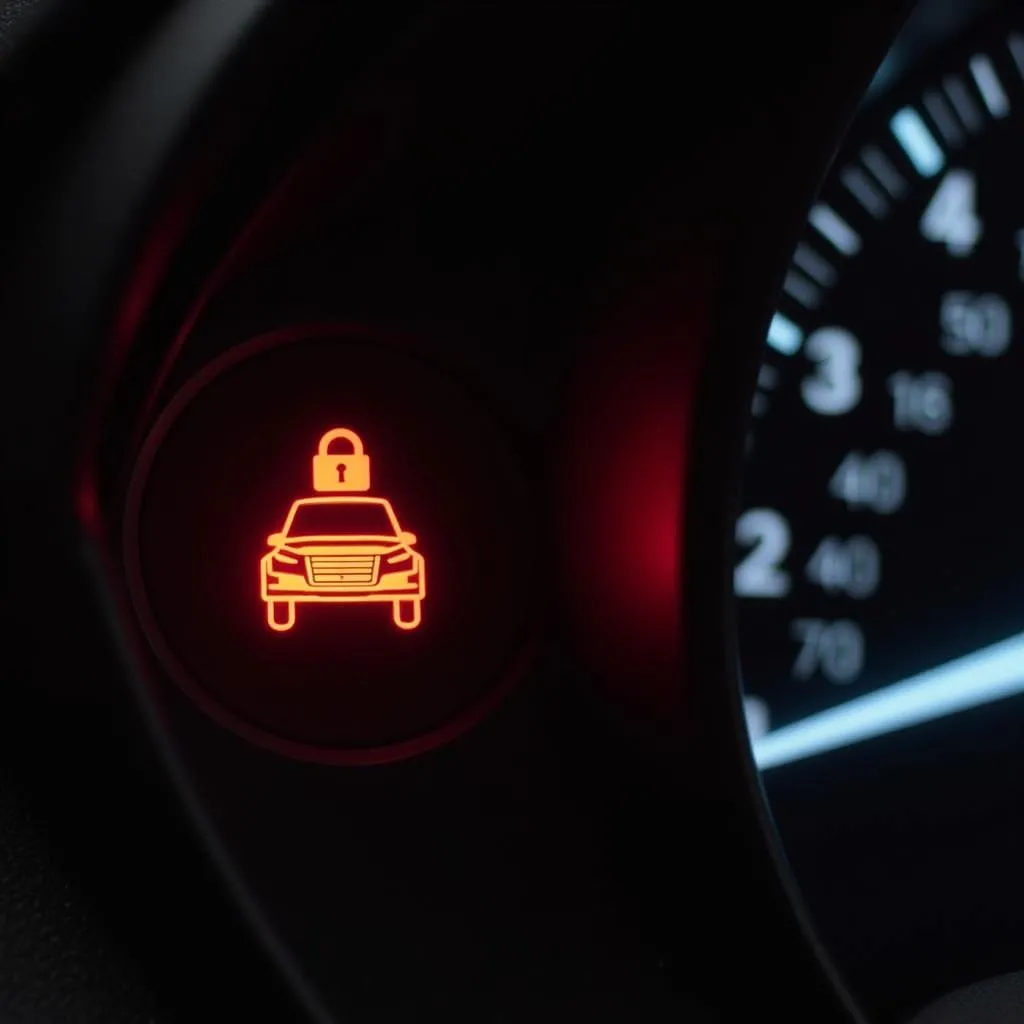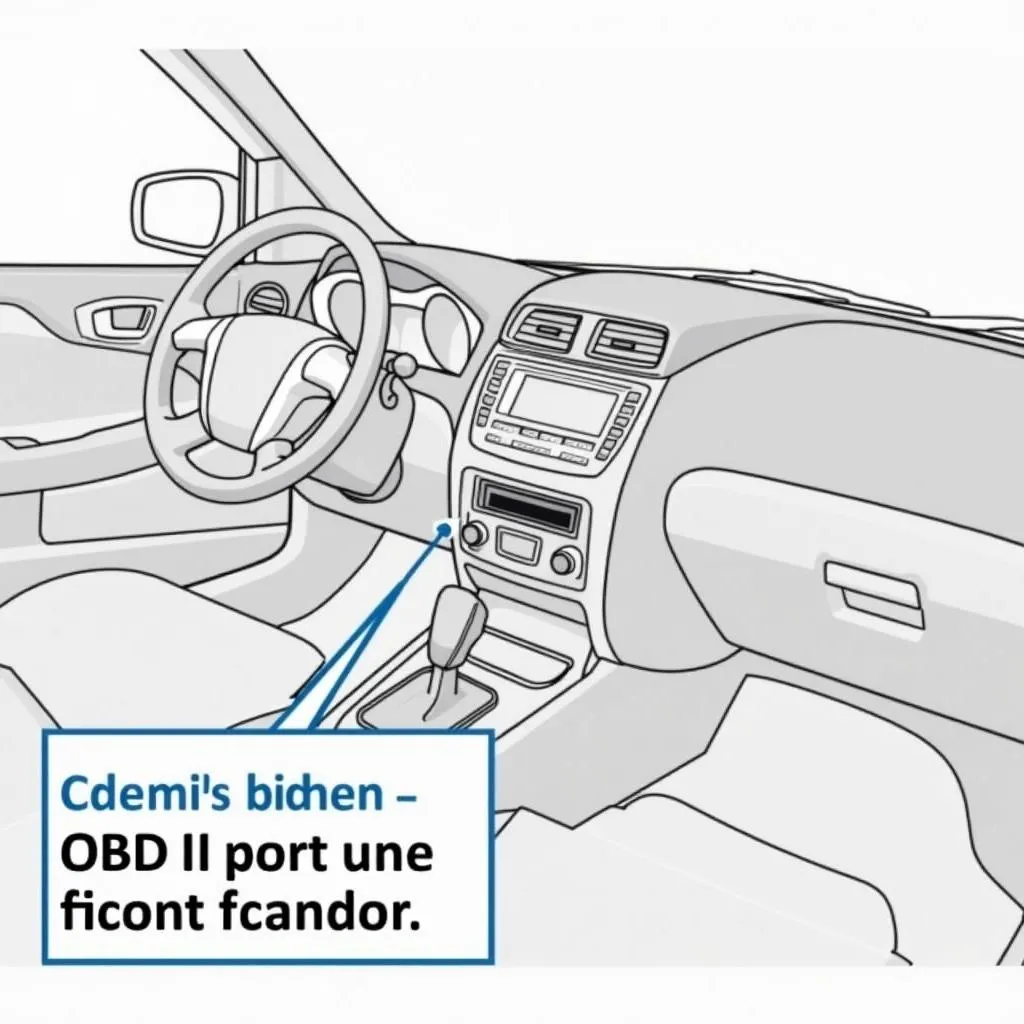A malfunctioning anti-theft system on your Ford Escape can be incredibly frustrating. It can prevent you from starting your vehicle and leave you stranded. While it’s designed to protect your car, sometimes it can cause more headaches than help.
This guide will walk you through common reasons your Ford Escape’s anti-theft system might be acting up, how to diagnose the issue, and the steps to get you back on the road.
Why is My Ford Escape Anti-Theft System Activated?
Before we dive into solutions, let’s understand why your anti-theft system might be triggered. Here are some common culprits:
- Weak or Dead Key Fob Battery: Your Ford Escape’s anti-theft system relies on a signal from your key fob. If the battery is low or dead, the system may not recognize the signal and assume a theft attempt.
- Faulty Key Fob: Beyond a dead battery, your key fob itself might be damaged or malfunctioning, disrupting the signal to your vehicle.
- Issue with the Vehicle’s Battery: A weak or dead car battery can also cause problems with the anti-theft system, as it needs sufficient power to communicate with the key fob.
- Problem with the Immobilizer System: Your Ford Escape utilizes a Passive Anti-Theft System (PATS) that includes an immobilizer. If there’s a fault with the immobilizer module, receiver, or the key’s transponder chip, it can prevent the engine from starting.
- Wiring Problems: Loose or corroded wiring connected to the anti-theft system components can interrupt communication and trigger the alarm.
 Ford Escape Dashboard with Warning Lights
Ford Escape Dashboard with Warning Lights
How to Recognize a Ford Escape Anti-Theft System Problem
Knowing the signs of a problematic anti-theft system can help you diagnose the issue quickly:
- Rapidly Flashing Security Light: A rapidly blinking red light on your dashboard (often shaped like a car with a lock) is a telltale sign of an anti-theft system issue.
- Engine Cranks but Won’t Start: If you hear the engine cranking but it refuses to turn over, the anti-theft system may be preventing ignition.
- Door Locks Behaving Erratically: Unexpected locking and unlocking of doors can point towards a problem with the anti-theft system.
What You’ll Need
Before attempting any fixes, gather these tools:
- Replacement Key Fob Battery: (If applicable to your key fob model)
- Car Battery Charger/Jumper Cables: In case of a dead car battery
- Code Reader (Optional): To read and understand error codes, a code reader like those offered by Cardiagtech can be beneficial.
Deactivating Your Ford Escape’s Anti-Theft System: A Step-by-Step Guide
Here’s how to try and deactivate the anti-theft system on your Ford Escape:
- Replace the Key Fob Battery: If you suspect a weak battery, replace it with a fresh one. This often resolves the issue.
- Try a Spare Key Fob: If you have a spare key fob, attempt to unlock and start your car with it. This can help determine if the issue lies with your primary key fob.
- Charge or Jumpstart the Car Battery: If your car battery is dead or weak, charge it using a battery charger or jumpstart your car. A healthy battery ensures proper communication between the key fob and the vehicle’s system.
- Reset the Anti-Theft System: Try resetting the system by locking and unlocking your car using the key fob button several times.
- Check for Error Codes: If you have a code reader, plug it into your vehicle’s OBD-II port (usually located under the dashboard on the driver’s side). Check for any error codes related to the anti-theft system. This information can guide you towards a more specific solution.
 Locating the OBD-II Port in a Ford Escape
Locating the OBD-II Port in a Ford Escape
FAQs: Ford Escape Anti-Theft System
Q: Can I permanently disable the anti-theft system on my Ford Escape?
A: While it’s technically possible to disable the anti-theft system, we strongly advise against it. Tampering with safety features can void your warranty and make your vehicle more vulnerable to theft.
Q: I’ve tried everything, and my Ford Escape still won’t start. What should I do?
A: If you’ve exhausted all troubleshooting options, it’s best to contact a qualified automotive locksmith or your Ford dealership. They have the expertise and specialized tools to diagnose and fix more complex issues with the anti-theft system.
Q: What’s the difference between PATS and other anti-theft systems?
A: Ford’s PATS (Passive Anti-Theft System) uses a transponder chip in your key. This chip communicates with your vehicle’s immobilizer system. Without the right signal, the engine won’t start. It adds a layer of security beyond traditional alarm systems.
Q: How much does it cost to fix a Ford Escape anti-theft system issue?
A: The cost can vary greatly depending on the problem’s source. A simple key fob battery replacement might be inexpensive, while a faulty immobilizer module can be more costly to replace.
Get Back on the Road with Confidence
Troubleshooting your Ford Escape’s anti-theft system can save you time and money. However, remember that safety features are crucial. If you’re ever unsure about tackling an issue yourself, seek help from a trusted mechanic or your dealership.
For top-quality diagnostic tools to help you understand your vehicle better, explore the range of products available at Cardiagtech.
Need further assistance with your Ford Escape’s anti-theft system or other automotive concerns? Connect with the experts at CARDIAGTECH for expert advice and solutions. We’re here to get you back on the road safely!

